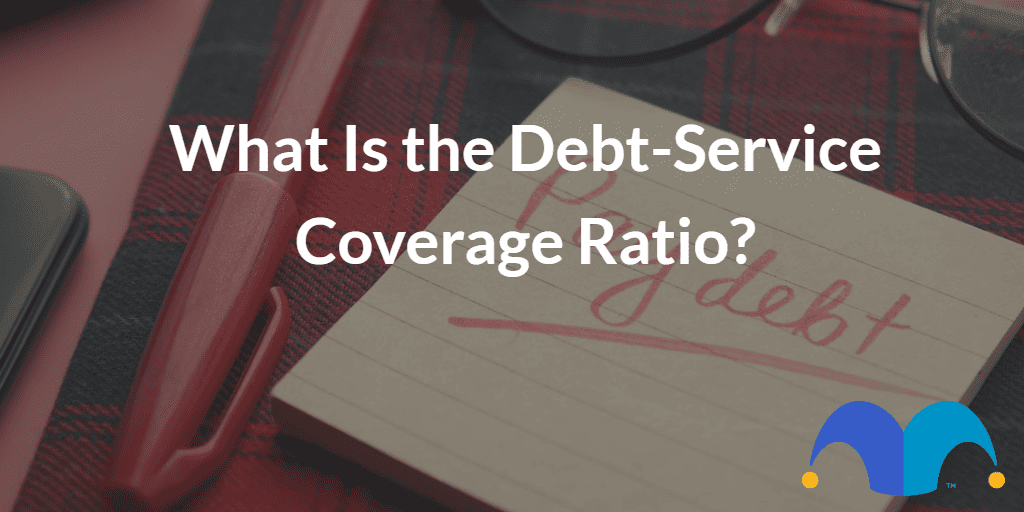The debt-service coverage ratio (DSCR) is an often-overlooked but critical element of business success. In its simplest form, the ratio gauges the ability of a business to repay its loans. The debt-service ratio, however, isn’t just a metric for investors; it can also affect whether a business can get a loan and how much it will have to pay to borrow money.
What is the debt-service coverage ratio?
The debt-service coverage ratio is an easy-to-understand figure that tells investors whether a company is making enough money to pay its debts. In its simplest form, it’s the net operating income divided by the sum of all debts. The ratio is a critical metric for measuring the creditworthiness – and amount of leverage – of a company.
Although the DSCR is primarily known as a creature of bank loan officers, it’s a metric that you can use for potential investments. A DSCR that’s less than 1.0 means the company isn’t bringing in enough money to pay its debts.
A company that has a DSCR of 0.75, for example, would only generate enough money to pay its debt for nine months of the year; a company reporting a DSCR of 3 would be making enough to pay its debts for three years.
Obviously, any DSCR greater than 1 is good news for a company, but most banks and investors like to see a figure that tops 1.25. A DSCR of 1.25 is also a common cutoff point for loans, but that’s subject to some variation. It can also depend on the circumstances, such as the lender’s risk appetite or the borrower’s planned use for the loan.
Calculating the DSCR
The standard formula for calculating a DSCR involves dividing the net operating income by the annual debt service.
If a company generates an operating income of £1 million and has an annual debt service of £500,000, then its DSCR would be 2.0 – a healthy amount. If it generated £2 million of annual net operating income and reported annual debt payments of £4 million, then its DSCR would be 0.5 – not so healthy.
Although the DSCR is a relatively simple concept, there are multiple ways of calculating it, mostly because of the effects of income taxes. Since the taxes owed by some companies can be deferred, you have to pay careful attention to their financial statements and see how much in taxes were actually paid for a given period. The amount of interest paid on long-term debt – a related subject – is also a factor since interest is tax-deductible, and the principal is not.
One relatively easy way of calculating DSCR from an income statement is to use earnings before interest, taxes, depreciation and amortisation (EBITDA) and subtract the actual taxes paid to arrive at a proxy for net operating income. You can then divide the number by the total amount of long-term debt plus total interest to arrive at a DSCR.
Another method considers issues such as unfinanced capital expenditures and dividends, which are included as part of debt service. For some natural resources-oriented companies, depletion may be part of the equation.
Using the DSCR
Since the ratio can change as the principal is paid off, it’s often best to look at a company’s DSCR over time instead of relying on a simple snapshot. If the DSCR is falling over the years, a generally sound idea is to run – don’t walk.
Although the ratio is a handy metric for measuring debt, never use a DSCR in isolation or as the sole basis for an investment decision. This is particularly important for growth stocks, which often increase revenue (but not income) over a period of years.
As with any other financial metric, double-check other people’s work. If a company offers a DSCR, make sure you understand the process that it used to calculate the ratio. It’s all too easy for debt interest to be minimised or more taxes to be deferred in hopes of increasing the ratio.
Finally, understand the circumstances. The DSCR is most commonly used to assess the creditworthiness of companies involved in real estate, and that can often mean sifting through a portfolio to search for outliers. Let’s say 10 properties from a portfolio of 100 have a DSCR that’s less than 1. Do you look at the entire pool or at individual properties? The decision is best made by the investor.
A DSCR example
Let’s look at a recent example of a capital-intensive industry: BT Group Plc (LSE:BT.A), which is one of the nation’s largest telecommunication companies. Starting with the firm’s 2022 annual report, we can see that its adjusted EBITDA was £7.6bn, a 2% increase from the previous year. We subtract income taxes (£332m) to arrive at a topline figure of £7.27bn.
For the denominator, we’ll add finance expense (£803m) and current long-term debt, which it places at £873m for 2022, to get a total of £1.67bn. (Its long-term obligations total £15.31bn billion, but not all of that amount is currently due.)
Do the math, and we arrive at an approximate overall DSCR of 4.35. Again, though, it’s important to look at the whole picture.
The moral of the story? Smart investors can use the DSCR as a rough gauge of a company’s ability to repay its debt, but the ratio is a starting point – not a silver bullet.
